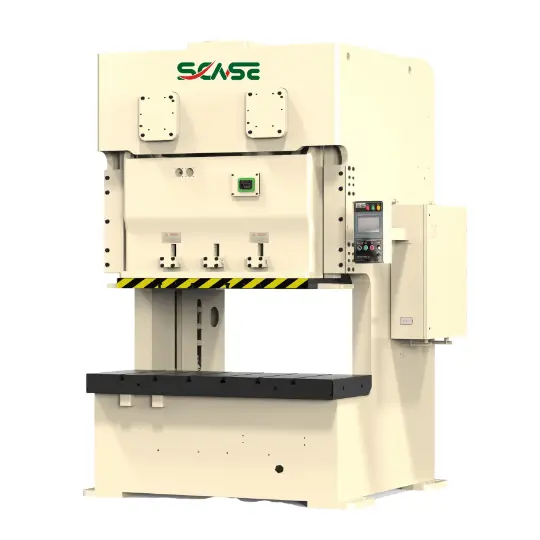What Features Increase C-Type Power Press Machine Price?
The price of a C-Type Power Press Machine is influenced by a variety of factors, each playing a crucial role in determining its cost and, consequently, its market positioning. Material costs are a primary consideration, with higher-grade materials leading to more expensive machines. The complexity of the manufacturing process, including the number of components and intricate assembly steps, also contributes to increased costs. Additionally, advancements in technology, such as automation and CNC capabilities, often lead to higher prices due to the investment in cutting-edge machinery. Brand reputation and industry recognition further play a significant role, as renowned brands often carry premium prices reflecting their esteemed status in the market. Market demand and supply dynamics are also pivotal; high demand can justify premium pricing, while oversupply may necessitate discounts or rebates to attract buyers.
Technological Advancements and Their Impact on C-Type Power Press Pricing
Technological innovations have revolutionized the manufacturing sector, particularly in the realm of C-Type Power Press Machines. Automation has streamlined production processes, reducing labor costs and increasing efficiency. CNC (Computer Numerical Control) capabilities have enhanced precision, enabling the creation of complex parts with minimal human intervention. Advanced control systems have also improved safety and productivity, making machines more reliable and efficient. However, these technological advancements come with associated costs, such as higher initial investments and the need for specialized expertise. While these technologies offer significant benefits, the price often reflects the investment in innovation.

C-Type Power Press Machine Price Range
The price range for C-Type Power Press Machines varies considerably based on specifications and features. Entry-level models typically cater to small-scale operations, offering basic functionalities at a lower cost. Mid-range machines are designed for moderate production demands, incorporating essential technologies and higher quality components. High-end models, tailored for large-scale manufacturing and specialized applications, command significantly higher prices due to advanced features and materials. Automation levels also influence the price; machines with higher automation capabilities are more expensive. Comparatively, budget-friendly options may prioritize cost over advanced features, targeting cost-sensitive industries.
Cost Factors for C-Type Power Press Machine
Understanding the cost components of a C-Type Power Press Machine is essential for both manufacturers and buyers. Labor costs encompass the expenses related to skilled workers and their productivity, which can vary based on the complexity of the machine. Raw material prices directly impact the overall cost, with fluctuations in material prices affecting machine pricing. Engineering complexities, including design intricacies and customizations, also contribute to higher costs. Transportation expenses, encompassing shipping and logistics, add to the final price. These factors collectively influence the machine's cost, making it crucial for buyers to consider their budget and requirements when purchasing.
Drivers of C-Type Power Press Price
Several external and internal factors drive the pricing of C-Type Power Press Machines. Production scale is a key driver; larger-scale manufacturers may benefit from economies of scale, reducing per-unit costs. Conversely, smaller manufacturers might face higher costs per unit. Customer demand and industry-specific needs also significantly influence pricing; high demand can justify premium prices, while niche requirements may necessitate tailored solutions. Geopolitical factors, such as trade policies and supply chain disruptions, can impact pricing by altering transportation costs and availability of components. These drivers interplay, creating a dynamic pricing environment that businesses must navigate effectively.
In conclusion, the price of a C-Type Power Press Machine is determined by a multifaceted interplay of factors, including material costs, technological advancements, market dynamics, and production scale. Understanding these elements is crucial for businesses seeking to optimize their purchasing decisions and manufacturers aiming to set competitive prices. By considering these drivers, stakeholders can make informed decisions that align with their strategic objectives and market needs.





